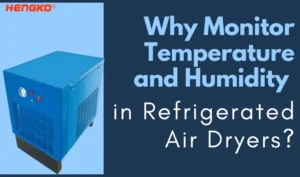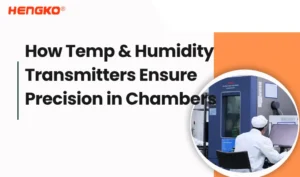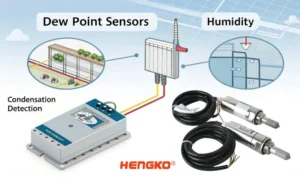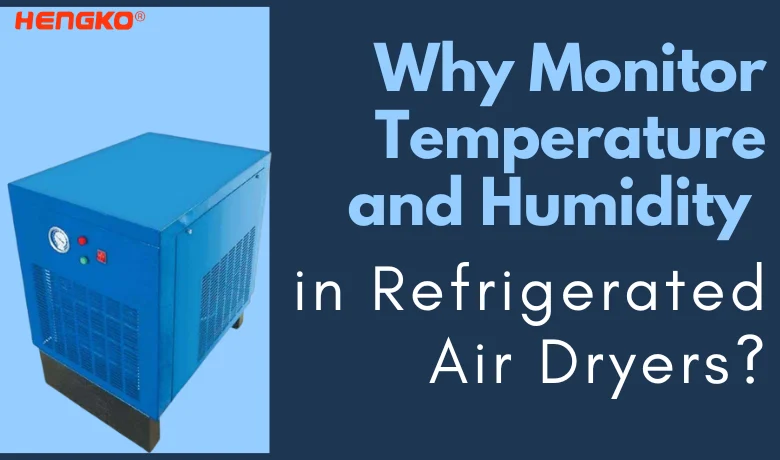Why One Office Zone is Too Humid & How a Humidity Transmitter Fixes It ?
Why One Office Zone is Too Humid & How a Humidity Transmitter Fixes It Persistent
Z najbardziej odległych zakątków Ziemi pochodzi paliwo, które umożliwia współczesne życie.
Strona główna " Sonda czujnika temperatury i wilgotności RS485 Modbus
HENGKO specjalizuje się w dostarczaniu wysokiej jakości, trwałych sond zaprojektowanych do dokładnego i spójnego pomiaru temperatury i wilgotności. Nasz zaawansowany interfejs RS485 Modbus zapewnia bezproblemową integrację z różnymi systemami, dzięki czemu idealnie nadaje się do zastosowań przemysłowych, komercyjnych i monitorowania środowiska.
Czujniki temperatury i wilgotności Modbus firmy HENGKO zaspokajają szeroki zakres potrzeb, od sond czujników temperatury i wilgotności ze stali nierdzewnej po wymienne sondy z tworzywa sztucznego. Nasze czujniki są dokładne, niezawodne i trwałe, dzięki czemu idealnie nadają się do monitorowania temperatury i wilgotności, zapraszamy do kontaktu w celu uzyskania szczegółowych informacji.
Poznaj idealne połączenie wygody i wydajności dzięki naszej standardowej sondzie z tworzywa sztucznego, zaprojektowanej z myślą o łatwej wymianie czujników temperatury i wilgotności. Wykonana z wysokiej jakości porowatego tworzywa sztucznego, ta łatwa w instalacji sonda płynnie integruje się z obecnymi systemami, oferując ekonomiczne rozwiązanie, które usprawni Twój projekt.
HENGKO, jako jeden z wiodących producentów sond temperatury i wilgotności, oferuje kompleksowe rozwiązania monitorujące dostosowane do szerokiego zakresu zastosowań przemysłowych, w tym pomiaru punktu rosy i nie tylko.
Nasze doświadczenie w tworzeniu wysokiej jakości, trwałych sond czujnikowych zapewnia dokładne i niezawodne gromadzenie danych. Dostarczamy nie tylko komponenty; zapewniamy pełne rozwiązania w zakresie monitorowania, integrując zaawansowaną technologię i przyjazne dla użytkownika projekty, aby spełnić określone potrzeby przemysłowe.
HENGKO to coś więcej niż tylko produkt - to partner zaangażowany w zapewnianie doskonałości w monitorowaniu temperatury i wilgotności.
Możesz w pełni dostosować unikalną sondę do swojego nowego czujnika w oparciu o specjalny projekt, monitor i wymagania środowiskowe.
Sprzedaż fabryczna, otrzymasz znacznie niższą i konkurencyjną cenę dzięki naszej niezwykle opłacalnej kontroli.
Dzięki naszym stale aktualizowanym produktom zawsze będziesz w stanie sprostać stale zmieniającym się potrzebom rynku.
Otrzymasz silne wsparcie marketingowe, które pomoże Ci skutecznie sprzedawać produkty, materiały pomocnicze obejmują: zdjęcia produktów w wysokiej rozdzielczości, fajne filmy z efektami 3D i wiele więcej.










Dostosuj swoją unikalną sondę czujnika 485 do nowych czujników lub przetworników temperatury i wilgotności dzięki specjalistycznym usługom OEM firmy HENGKO.
HENGKO jest profesjonalnym dostawcą czujników temperatury i wilgotności RS485 Modbus. Jako wiodący producent przetworników punktu rosy, przetworników temperatury i wilgotności oraz ręcznych mierników punktu rosy, oferujemy szeroką gamę rozwiązań dostosowanych do konkretnych potrzeb w zakresie monitorowania.
Nasze produkty zostały zaprojektowane z naciskiem na dokładność i niezawodność, zapewniając optymalną wydajność w różnych zastosowaniach. Niezależnie od tego, czy potrzebujesz wysokiej jakości czujnika punktu rosy, czy solidnego przetwornika wilgotności, HENGKO posiada wiedzę i produkty, które skutecznie wspierają Twoje projekty.
Skontaktuj się z nami już dziś, aby omówić swoje wymagania i odkryć najlepsze rozwiązania dla Twoich potrzeb w zakresie monitorowania.






W skrócie, czujnik temperatury i wilgotności RS485 to urządzenie wykorzystujące protokół komunikacyjny RS485 do wysyłania danych o temperaturze i wilgotności otoczenia do komputera głównego lub innego urządzenia.
Jest często używany w zastosowaniach przemysłowych, gdzie wymagane są dokładne i wiarygodne pomiary temperatury i wilgotności.

RS485 to zbalansowany, dwuprzewodowy, różnicowy standard sygnalizacyjny przeznaczony do komunikacji na duże odległości. Jest on bardziej odporny na szumy i zakłócenia niż inne protokoły komunikacyjne, takie jak RS232, i może być używany do podłączania wielu czujników do jednego komputera głównego.
RCzujniki temperatury i wilgotności S485 zazwyczaj wykorzystują termistor i pojemnościowy czujnik wilgotności do pomiaru odpowiednio temperatury i wilgotności. Termistor jest rezystorem, którego rezystancja zmienia się wraz z temperaturą. Pojemnościowy czujnik wilgotności to kondensator, którego pojemność zmienia się wraz z wilgotnością.
Czujnik przetwarza zmiany rezystancji i pojemności na sygnał elektryczny, który jest następnie wysyłany do komputera hosta za pomocą protokołu RS485. Komputer główny może następnie wykorzystać dane do monitorowania temperatury i wilgotności otoczenia lub do sterowania urządzeniami, takimi jak grzejniki, klimatyzatory i nawilżacze.
Czujniki temperatury i wilgotności RS485 są wykorzystywane w wielu różnych zastosowaniach, w tym:
Przy wyborze czujnika temperatury i wilgotności RS485 ważne jest, aby wziąć pod uwagę następujące czynniki:
Mam nadzieję, że to pomoże!
Daj mi znać, jeśli masz inne pytania.
Jeśli chodzi o zalety, zawsze są porównywane z innymi typami czujników, takimi jak I2C lub 4-20 mACzujniki temperatury i wilgotności RS485 oferują kilka wyraźnych zalet:
RS485 może niezawodnie przesyłać dane na odległość do 1200 metrów, co jest znacznie dłuższym dystansem niż kilka metrów zwykle osiąganych za pomocą I2C. Sprawia to, że jest to idealne rozwiązanie dla dużych obiektów lub sytuacji, w których czujniki są rozmieszczone na dużym obszarze.
W przeciwieństwie do protokołów punkt-punkt, RS485 obsługuje komunikację typu multi-drop, umożliwiając podłączenie do 32 czujników na jednej magistrali. Upraszcza to okablowanie i zmniejsza koszty pozyskiwania danych w porównaniu do konieczności stosowania indywidualnych połączeń dla każdego czujnika.
Dzięki zbalansowanej, różnicowej sygnalizacji, RS485 jest wysoce odporny na zakłócenia elektromagnetyczne i zakłócenia wspólne. Zapewnia to niezawodną transmisję danych nawet w trudnych warunkach przemysłowych.
RS485 może osiągać szybsze prędkości transferu danych w porównaniu z niektórymi innymi protokołami, umożliwiając monitorowanie zmian temperatury i wilgotności w czasie zbliżonym do rzeczywistego. Może to mieć kluczowe znaczenie dla aplikacji, w których szybki czas reakcji ma krytyczne znaczenie.
RS485 jest szeroko stosowanym i ugruntowanym standardem, dzięki czemu jest kompatybilny z szeroką gamą systemów akwizycji danych i urządzeń sterujących. Ta elastyczność upraszcza integrację systemu i zmniejsza zależność od zastrzeżonych rozwiązań.
W porównaniu do czujników analogowych (4-20 mA), czujniki RS485 generalnie zużywają mniej energii, zwłaszcza na dłuższych dystansach. Może to być korzystne dla aplikacji zasilanych bateryjnie lub sytuacji, w których ważna jest efektywność energetyczna.
RS485 przesyła dane cyfrowo, eliminując potrzebę konwersji analogowo-cyfrowej po stronie odbiorczej. Poprawia to dokładność i upraszcza przetwarzanie danych. Dodatkowo, indywidualne adresy czujników pozwalają na selektywną akwizycję danych i upraszczają rozwiązywanie problemów.
Obsługując wiele czujników na jednej magistrali, RS485 znacznie zmniejsza ilość potrzebnego okablowania w porównaniu z indywidualnymi połączeniami dla każdego czujnika. Przekłada się to na oszczędność kosztów materiałów i robocizny instalacyjnej.
Tak więc czujniki temperatury i wilgotności RS485 oferują połączenie solidnej komunikacji, wszechstronności i dokładności, co czyni je preferowanym wyborem dla szerokiego zakresu zastosowań w przemyśle, rolnictwie i monitorowaniu środowiska.
Mam nadzieję, że te informacje o zaletach pomogą ci lepiej zrozumieć korzyści płynące z używania czujników temperatury i wilgotności RS485!
Również czujniki temperatury i wilgotności RS485 są dostępne w różnych typach, z których każdy jest dostosowany do określonych potrzeb i środowisk. Oto lista 5 popularnych typów czujników RS485 na rynku:

Choosing the right type of RS485 temperature and humidity sensor depends on factors like your application, environment, budget, and desired features. Consider factors like measurement range, accuracy, communication protocol, and operating temperature range when making your selection.
Choosing the right RS485 temperature and humidity transmitter for your environment monitoring needs involves a good match between the sensor’s capabilities and your specific application.
Here’s are some key factors you should consider:
Carefully considering these factors, you can choose the perfect RS485 temperature and humidity transmitter for accurate and reliable environment monitoring, ensuring the optimal performance and well-being of your space.
The popularity of RS485 Modbus temperature and humidity sensors stems from a perfect blend of technical advantages and practical benefits they offer, making them a go-to choice for diverse monitoring applications.
As following are key reasons behind their widespread use:
kilka pytań na temat punktu rosy oraz przetwornika i czujnika, które Ty i inni chcielibyście wiedzieć
RS485, also known as TIA-485 or EIA-485, is a standard that defines the electrical characteristics of drivers and receivers for use in serial communications systems. It’s essentially a language for devices to talk to each other over wires. Here are some key aspects of RS485:
Overall, RS485 is a versatile and robust communication standard widely used for reliable data transmission in various applications. If you’re looking for a way to connect multiple devices over long distances or in noisy environments, RS485 might be a good fit.
Let me know if you have any further questions about RS485 or its applications.
Choosing between RS232 and RS485 depends on your specific needs, as each communication standard has its advantages and disadvantages. Here’s a comparison to help you decide:
| Cecha | RS232 | RS485 |
|---|---|---|
| Distance | Up to 50 feet | Up to 1200 meters |
| Number of devices | 2 (point-to-point) | Up to 32 (multi-drop) |
| Data rate | Up to 3 Mbps | Up to 40 Mbps |
| Odporność na zakłócenia | Niski | Wysoki |
| Koszt | Niższy | Slightly higher |
| Zastosowania | Point-to-point connections over short distances | Multi-point communication, long distances |
Ultimately, the best choice depends on your specific requirements.
If you need to connect two devices over a short distance and cost is a major concern, RS232 may be sufficient.
But if you need to connect multiple devices over longer distances, higher data rates, and immunity to noise are important, then RS485 is the better option.
Here’s a guide to connecting RS485 devices:
1. Wiring:
2. Termination Resistors:
3. Device Addressing (if applicable):
4. Data Transmission:
Additional Considerations:
The maximum theoretical distance for RS485 communication is 1200 meters (4000 feet). However, achieving this distance in practice depends on several factors, and it’s not always possible:
Cable Quality: Higher quality, thicker twisted-pair cable with lower capacitance allows for longer distances as it minimizes signal attenuation.
Data Rate: Lower data rates experience less attenuation over longer distances. For reliable communication at 1200 meters, you might need to lower the data rate significantly compared to shorter distances.
Noise and Interference: The presence of electrical noise and electromagnetic interference in the environment can significantly reduce the maximum achievable distance. Shielded cables help mitigate these effects.
Termination Resistors: Improperly chosen or placed termination resistors can lead to reflections and signal distortion, limiting the effective distance.
Number of Devices: The more devices connected to the bus, the higher the signal load and the shorter the maximum achievable distance.
Overall System Design: Proper bus topology, grounding, and power supply considerations can improve signal integrity and potentially extend the achievable distance.
In practical situations, the maximum reliable distance for RS485 is often considerably lower than the theoretical 1200 meters. It’s advisable to aim for 500-800 meters as a more realistic expectation, and even less under challenging conditions.
Choosing the right type of RS485 communication cable is crucial for reliable data transmission in your specific applications. Here’s a breakdown of the main types and their suitability:
1. Twisted-Pair Cable:
2. Coaxial Cable:
3. Fiber Optic Cable:
Choosing the Right Cable:
Additional Factors:
Here are some examples of commonly used RS485 communication cables:
Remember, the best type of RS485 communication cable depends on your specific needs and environment. By carefully considering the factors mentioned above, you can choose the most suitable and cost-effective cable for reliable data transmission in your RS485 applications.
Choosing between a Modbus RS485 temperature and humidity sensor or a 4-20mA sensor depends on several factors specific to your application. Here’s a breakdown of their key differences to help you decide:
Plusy:
Wady:
Plusy:
Wady:
Ultimately, the best choice depends on your specific application requirements, budget, and technical expertise. Consider the pros and cons of each type and carefully evaluate your needs before making a decision.
I hope this information helps you choose the right temperature and humidity sensor for your project! Feel free to ask if you have any further questions or need help comparing specific models.
Compared to other types of humidity sensors, such as I2C or 4-20mA, RS485 humidity sensors offer several distinct advantages, making them a preferred choice for various monitoring applications. Here’s a breakdown of the key benefits:
RS485 allows reliable data transmission over distances of up to 1200 meters, significantly exceeding the capabilities of I2C (typically limited to a few meters) and even exceeding the typical range of 4-20mA sensors (around 30 meters). This makes it ideal for large facilities, geographically dispersed systems, or situations where sensors are spread out over a wide area.
Unlike point-to-point protocols like I2C, RS485 supports multi-drop communication, allowing you to connect up to 32 sensors on a single bus. This simplifies wiring, reduces wiring costs, and facilitates centralized data acquisition from multiple locations.
Thanks to its balanced, differential signaling, RS485 is highly resistant to electromagnetic interference and common mode noise. This ensures reliable data transmission even in harsh industrial environments with electrical noise or harsh weather conditions.
RS485 can achieve faster data transfer rates compared to some other protocols, allowing for near real-time monitoring of humidity changes. This can be crucial for applications where quick response times are critical, such as climate control systems or environmental monitoring.
RS485 is a widely used and well-established standard, making it compatible with a large range of data acquisition systems and control equipment. This flexibility simplifies system integration and reduces reliance on proprietary solutions.
RS485 transmits data digitally, eliminating the need for analog-to-digital conversion at the receiving end. This improves accuracy and simplifies data processing. Additionally, individual sensor addresses allow for selective data acquisition and simplify troubleshooting.
By supporting multiple sensors on a single bus, RS485 significantly reduces the amount of wiring needed compared to individual connections for each sensor. This translates to cost savings on materials and installation labor.
Compared to analog (4-20mA) sensors, RS485 sensors generally consume less power, especially over long distances. This can benefit battery-powered applications or situations where energy efficiency is important.
RS485 facilitates adding more sensors or devices to the network effortlessly, making it easily scalable for future needs.
In conclusion, the advantages of RS485 humidity sensors make them a robust and versatile choice for various monitoring applications. Their long-distance communication, multi-sensor support, noise immunity, and faster data transfer rates, coupled with their compatibility, digital communication, and reduced wiring costs, make them well-suited for industrial, agricultural, environmental, and building automation applications.
Both stainless steel and plastic probes offer advantages and disadvantages for temperature and humidity sensors, making the choice depend on your specific needs and application. Here’s a breakdown of their key differences to help you decide:
Plusy:
Wady:
Plusy:
Wady:
In conclusion, the best choice between a stainless steel and a plastic probe for your temperature and humidity sensor depends on your specific application and priorities.
Consider the factors mentioned above, like durability, temperature range, cost, and environmental conditions, to make an informed decision.
Skontaktuj się z HENGKO już dziś, aby uzyskać odpowiedzi na wszelkie pytania dotyczące czujników temperatury i wilgotności, przetworników i rozwiązań.
Why One Office Zone is Too Humid & How a Humidity Transmitter Fixes It Persistent

Introduction Compressed air is often referred to as the “fourth utility” in modern industry, alongside

1. Introduction The semiconductor industry operates under some of the most stringent environmental conditions of

Wprowadzenie W świecie symulacji środowiskowych i testów niezawodności, komory o stałej temperaturze i wilgotności

Zastanawiasz się, jak czujniki punktu rosy wpływają na wydajność przemysłową? Czujniki te odgrywają
Skontaktuj się z naszym zespołem ekspertów, aby uzyskać spersonalizowaną pomoc, a my niezwłocznie dostarczymy najlepsze rozwiązania w zakresie przetworników i czujników temperatury i wilgotności dostosowane do Twoich konkretnych potrzeb.
Why One Office Zone is Too Humid & How a Humidity Transmitter Fixes It Persistent humidity in one office zone can disrupt comfort, increase mold
Why One Office Zone is Too Humid & How a

Introduction Compressed air is often referred to as the “fourth

1. Introduction The semiconductor industry operates under some of the